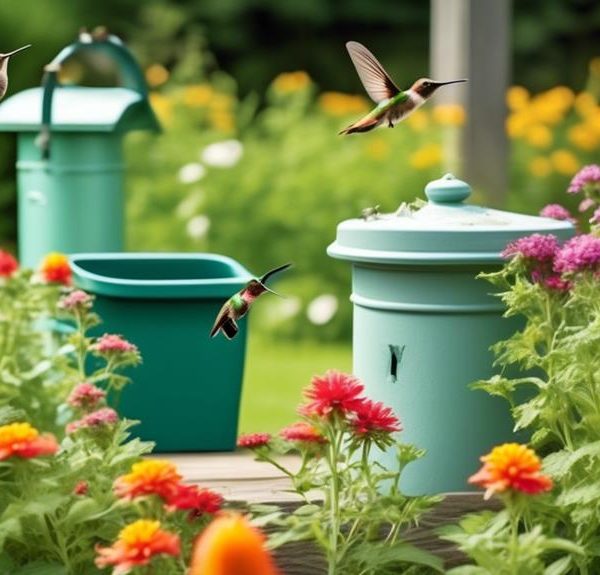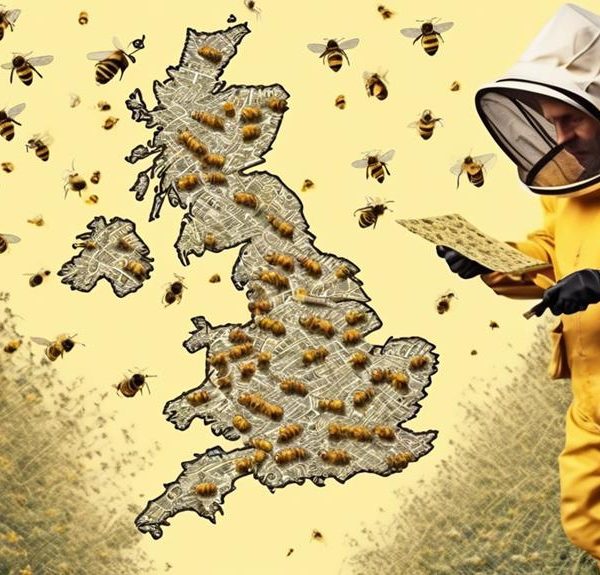Discover the surprising costs of beekeeping in the UK, and evaluate whether the honeyed rewards are worth the investment.
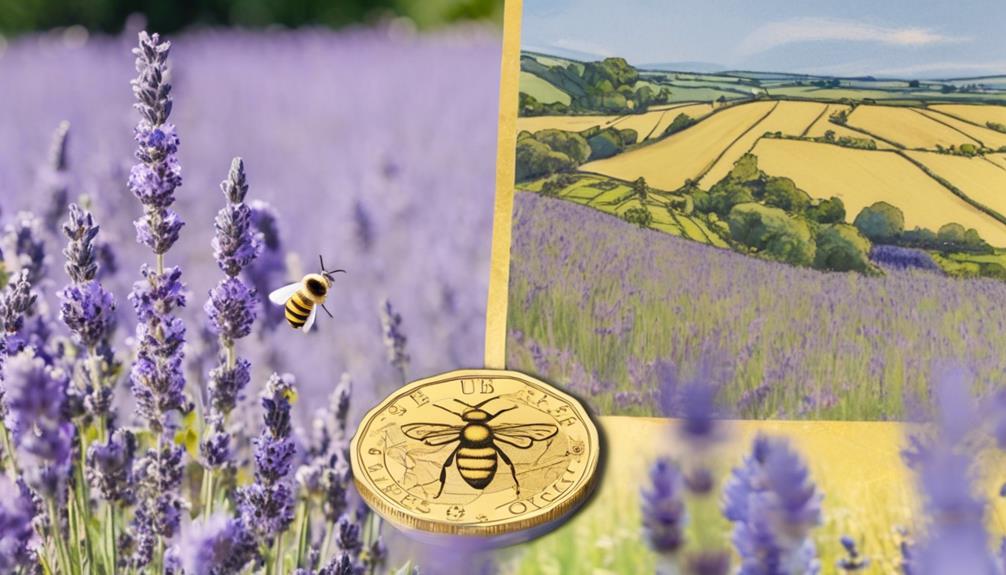
How Much Do Bees Cost in the Uk?
In the bustling financial hub of London, one might not expect the humble bee to carry a hefty price tag. Yet, as you consider embarking on a beekeeping journey in the UK, you'll find that the cost of bees themselves, along with the necessary equipment and hive maintenance, can be quite an investment.
But why does this seemingly simple hobby have such a potentially high initial cost? And more importantly, does the honey-sweet return justify the investment? These are questions you'll need to investigate as you uncover the true cost of beekeeping in the UK.
Key Takeaways
- The cost of bees in the UK varies depending on the type and quantity, ranging from £30 for bumblebee colonies to £200 for a nucleus of honeybees.
- Essential beekeeping equipment, such as a bee suit, smoker, hive tool, and hive, can range from £50 to £500.
- Regular hive maintenance, including treatments for pests and diseases, hive part replacements, and bee feeding, can incur additional expenses ranging from £10 to £50 per hive.
- Beekeepers can potentially earn a return of £250 to £350 per colony per year from honey harvest, considering that a colony can produce 25 to 50 pounds of honey, with each jar selling for £5 to £7.
Initial Investment: Purchasing Bees
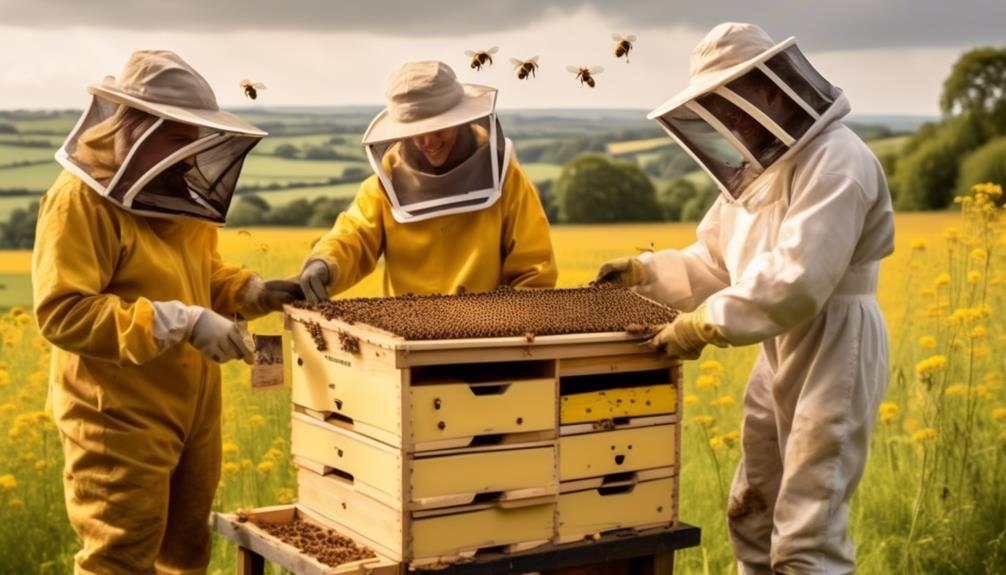
When it comes to starting your own beekeeping journey, the first major cost you'll encounter is the purchase of the bees themselves. It's crucial to understand that the price of bees in the UK can vary significantly depending on the type and quantity you're buying.
Firstly, you've got your honeybees. A nucleus of honeybees, which is a smaller, starter colony, usually costs around £200. This includes a mated queen and around 10,000 worker bees. If you're just after a queen bee, you're looking at around £40.
Then there's bumblebees, which are typically sold in colonies of around 60-80 bees, including a queen. Expect to pay about £30 for a bumblebee colony.
Lastly, solitary bees like Mason or Leafcutter bees, are often sold in tubes of around 25 bees for about £25.
Cost of Beekeeping Equipment
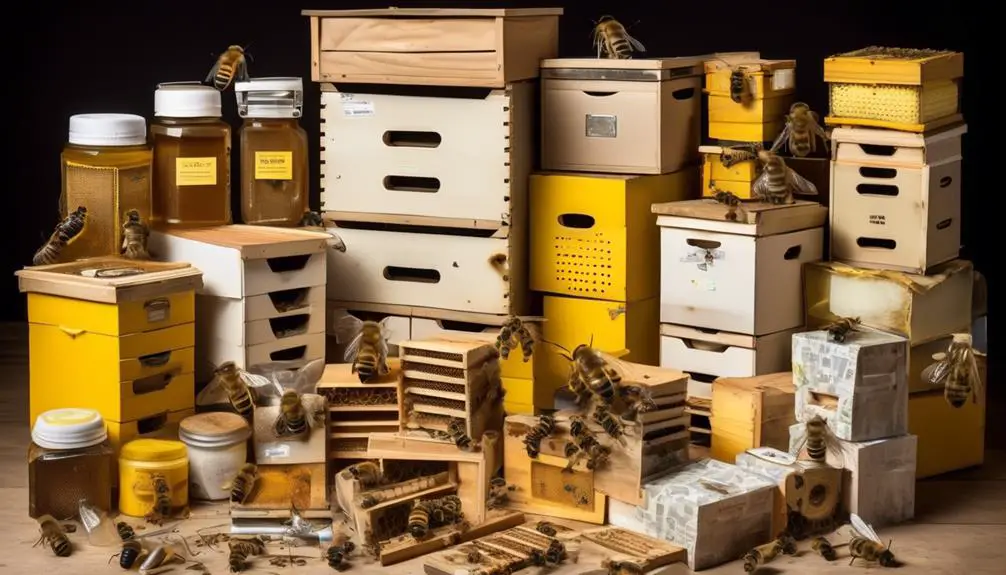
Beyond the initial investment in bees, you'll also need to budget for essential beekeeping equipment, with costs varying based on the quality and type of tools you opt for. You'll find that the main items needed are a bee suit, smoker, hive tool, and of course, the hive itself.
A quality bee suit, which protects you from stings, can cost between £50 and £150. A smoker, used to calm the bees, ranges from £20 to £40. The hive tool, a multipurpose device for hive maintenance, is around £10. Lastly, the hive, your bees' home, can range from £150 to £500 depending on its complexity and the materials used.
Additional costs can arise from optional equipment like extractors for honey harvesting, which can set you back anywhere from £100 to £500. Moreover, remember the ongoing costs such as replacement parts, medication for bees, and feeding supplies, which can add up to £50 to £200 annually.
In total, your initial outlay for beekeeping equipment could range from £230 to £1,200, with ongoing annual costs. Therefore, remember to factor these into your beekeeping budget.
Hive Maintenance and Upkeep Expenses
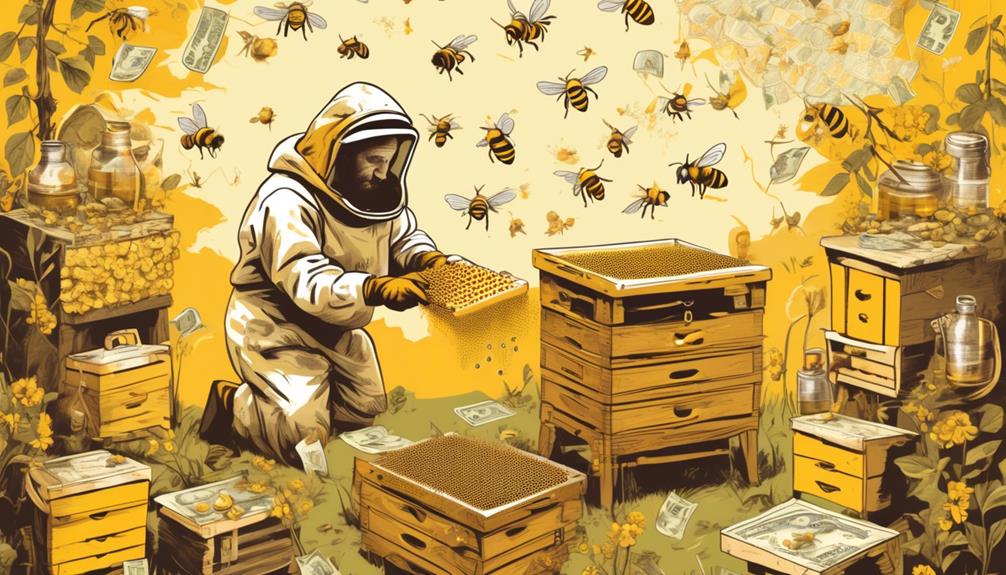
In addition to the initial expenses, you'll also need to consider the ongoing costs of hive maintenance and upkeep. Maintaining a healthy hive environment is crucial for the bees' productivity and survival, and this comes with its own set of costs.
You'll need to regularly check your hive for pests and diseases. This could entail buying treatments for varroa mites or foulbrood, which can cost anywhere from £10 to £50 per hive, depending on the severity of the infestation. Regularly replacing old or damaged hive parts is also a must. Frames and foundation, for instance, can cost around £3 per frame.
You'll also need to invest in feeding your bees, especially during winter or periods of nectar scarcity. A bag of bee feed, which can last around a month, can cost from £15 to £30, depending on the type and brand.
Lastly, it's wise to factor in potential veterinary costs if your colony becomes sick.
Potential Additional Costs
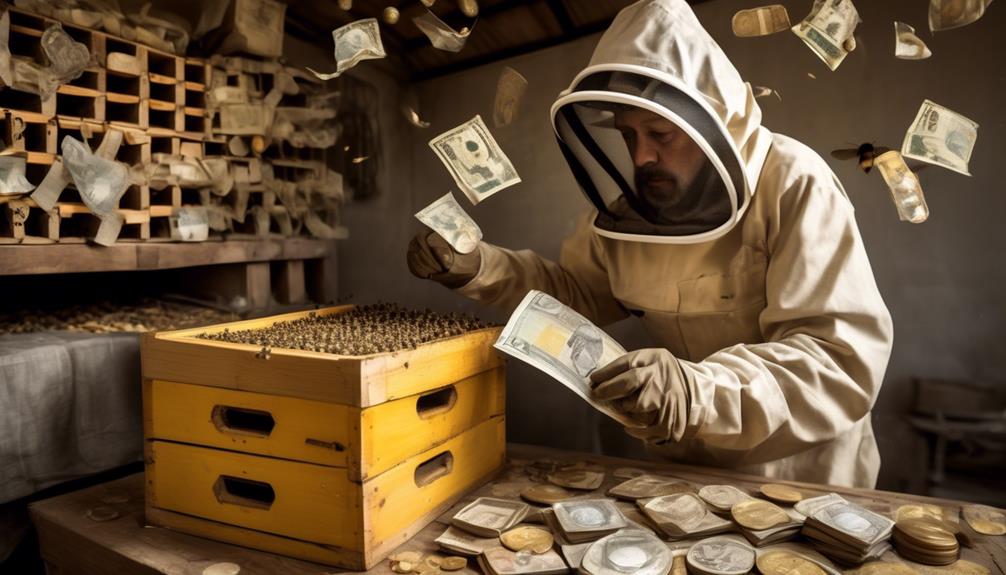
While you're keeping up with hive maintenance and the health of your bees, you also need to be prepared for some potential additional costs that might sneak up on you. Beekeeping isn't just about the initial investment in bees and hives; there are other expenses that can add up quickly.
For instance, you'll likely need to invest in protective clothing, such as a bee suit, gloves, and a veil. This gear can cost anywhere from £50 to £200. Additionally, you'll need tools such as a hive tool, a smoker, and a bee brush. These can add another £20 to £60 to your budget.
Bee feeding supplies are another consideration. Depending on the time of year and the health of your bees, you may need to provide supplemental feeding. Sugar syrup, pollen patties, and feeding containers can cost around £10 to £30.
There's also the matter of disease and pest control. Treatments for mites, beetles, and other pests can run from £5 to £15 per hive per year. Moreover, if your bees get sick, you may need to call a bee vet, which could set you back £50 to £100 per visit.
Understanding the Honey Harvest Returns
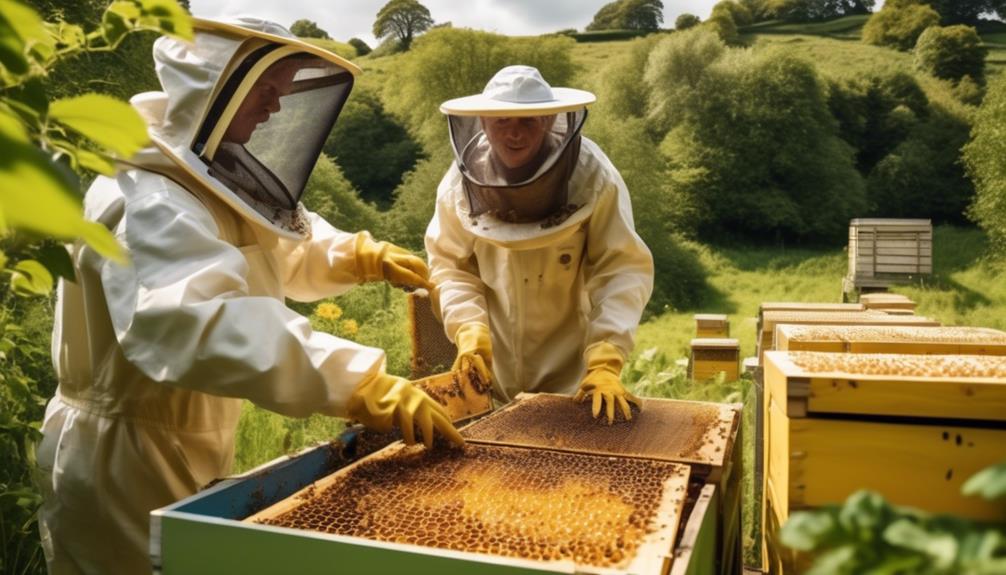
Turning to the sweet side of beekeeping, it's crucial you understand the potential returns from your honey harvest. It's not just about the cost of bees, it's also about what you can earn back.
On average, a honey bee colony in the UK can produce 25 to 50 pounds of honey per year. However, this figure varies greatly depending on factors such as weather conditions, the strength of the colony, and the nectar flow.
To monetize the honey, you'll need to bottle and label it for sale. A 227g jar of honey sells for approximately £5 to £7 in the UK. If you harvest 25 pounds (or around 11.3 kg) of honey, this equates to nearly 50 jars. So, you're looking at a potential return of £250 to £350 from one colony in a year.
Bear in mind, these figures are estimates. They don't consider additional costs like jars, labels, or marketing efforts. However, they provide a general idea of what you can expect to earn from your honey harvest. This can help you decide if beekeeping is a viable option for you.
Frequently Asked Questions
What Types of Bees Are Best for Honey Production in the Uk?"
In the UK, the best types of bees for honey production are the Buckfast and the Italian bees.
You'll find that Buckfast bees are renowned for their excellent honey production, hardiness, and gentleness.
Italian bees, on the other hand, are known for their prolific breeding and honey production. However, they're not as hardy in colder climates.
It's essential you consider your local climate and beekeeping goals when choosing a bee variety.
Are There Any Legal Requirements or Permits Needed for Beekeeping in the Uk?"
Yes, there are certain legal requirements for beekeeping in the UK.
You're not required to have a permit, but you must register your bees with BeeBase, the National Bee Unit's database.
You're also obligated to manage your bees responsibly, which includes controlling diseases and not causing a nuisance to others.
It's also recommended to join a local beekeeping association for advice and support.
What Diseases or Pests Do Bees Often Encounter in the UK, and What Are the Related Costs?"
In the UK, bees commonly face diseases like American foulbrood and pests like varroa mites. Dealing with these issues isn't cheap. You'll need to invest in treatments like Apiguard for mites, which can cost around £25 for enough to treat five hives. If American foulbrood hits, you're looking at a complete hive replacement, meaning costs can skyrocket.
Always remember, preventive measures are cheaper than cure.
How Can Local Climate Conditions in the UK Affect Beekeeping Costs?"
In the UK, local climate conditions greatly affect your beekeeping costs. If it's colder, you'll need to invest more in hive insulation and food supplements to keep the bees healthy.
Frequent rain can limit bees' foraging time, reducing honey production and increasing your expenses on supplementary feed.
What Are Some Potential Income Sources for Beekeepers Apart From Honey Production?"
Apart from honey production, you've got several options to boost your income as a beekeeper.
You can sell beeswax, used in numerous products from candles to cosmetics.
Propolis, a resin-like material bees collect, also fetches a good price.
Offering pollination services to local farmers can be lucrative.
Don't overlook beekeeping classes, either. Sharing your knowledge can be rewarding financially and personally.
Lastly, selling beekeeping supplies could add to your profits as well.
Conclusion
In conclusion, beekeeping in the UK isn't cheap.
You're looking at a serious initial investment for buying bees and equipment. Your expenses don't stop there either, with hive maintenance and potential additional costs to consider.
However, the sweet return from honey harvesting might just balance the scales.
It's essential to understand the costs involved before you start, so you're fully prepared for your buzzing new venture.

